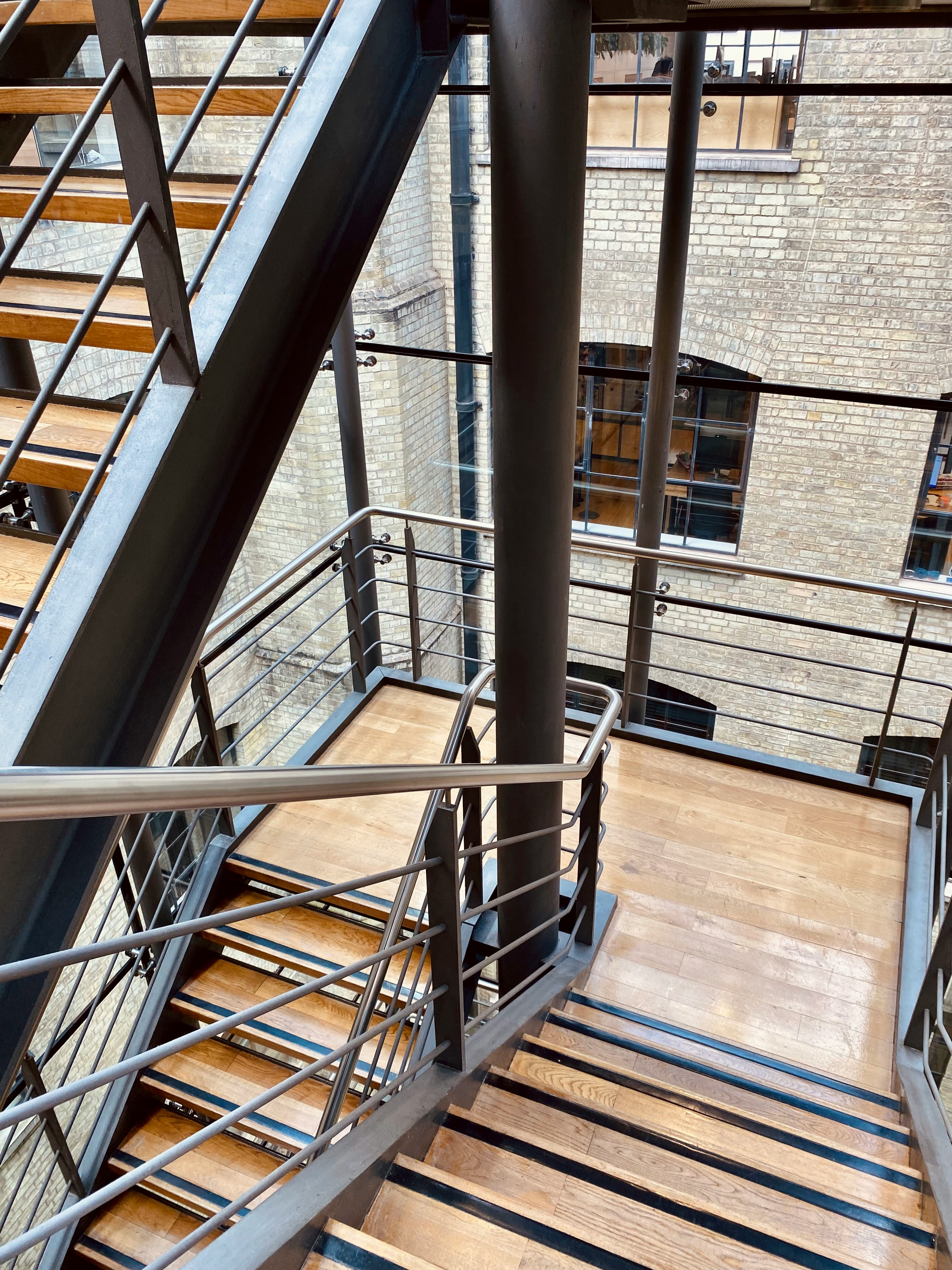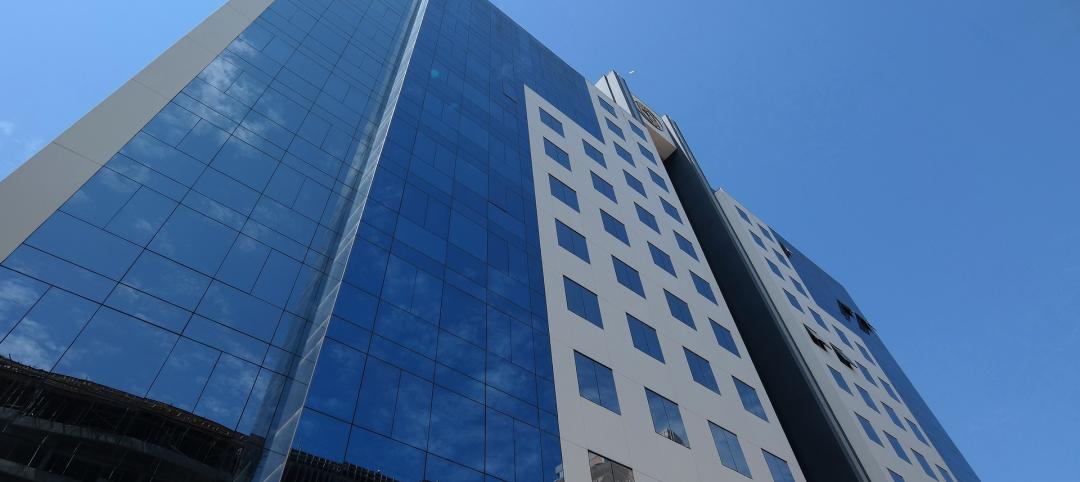Even before the pandemic, the traditional American office building was on life support. Now, real estate developers across the country are reinventing existing properties, often converting them into residential spaces. However, this solution may be fraught with fire and life safety challenges.
This article focuses on six critical aspects that architects, commercial property owners, and developers must consider when adapting a former office building to residential use based on the International Building Code (IBC), which is widely adopted as the state building code.
1. International Building Code vs. International Existing Building Code
Making alterations to a building, such as changing its occupancy, doesn’t necessarily mean the entire building must fully comply with the International Building Code. The International Existing Building Code (IEBC), adopted by many states, provides guidelines on how to modify buildings to meet IBC standards without overburdening owners with full compliance for all existing areas.
The IEBC is designed to facilitate the safe reuse and continued use of existing buildings. It recognizes that bringing an entire building up to the latest code may not always be feasible or necessary, especially if only a portion of the building is being modified. This approach helps to balance safety with practicality, ensuring that building owners are not faced with prohibitively expensive and time-consuming renovations that could make adaptive reuse projects unviable. A comprehensive understanding of the IEBC allows design professionals to tailor the scope of conversion projects, minimizing the impact on existing spaces and reducing construction costs and time.
2. Allowable number of stories and building area
The allowable number of stories and building area for office and residential uses differ. Residential buildings face more restrictive requirements, resulting in fewer allowable stories and smaller floor areas. For instance, a six-story, fully sprinklered office building built to Type IIA construction standards (noncombustible structural material with a one-hour fire resistance rating) cannot be entirely converted into residential use.
The IBC only allows up to five stories for residential buildings of the same construction type. Similarly, an office building with 69,000 sf per floor built to Type IIB construction (noncombustible structural material with no fire resistance rating) cannot be converted to residential use, since it is restricted to 48,000 sf per floor.
These constraints necessitate careful planning to ensure compliance and safety. Architects and developers must conduct a thorough analysis of the existing building’s structure and design to determine how best to reconfigure it for residential use, while adhering to the IBC’s stringent requirements. This may involve limiting the work scope area, adding fire barriers to provide occupancy separation or incorporating additional fire safety measures to compensate for the change in use.
3. Fire protection, life safety, and fire service system upgrades
Converting office space to residential use often requires substantial modifications to existing fire protection, life safety and fire service systems. All sleep areas demand low-frequency horns and carbon monoxide/smoke alarm devices which are not required in business occupancies. Additionally, many older office buildings are equipped with standard response sprinklers, which are inadequate for residential use. Quick-response or residential sprinklers, which activate faster and more efficiently, are required. Tests by Factory Mutual for FEMA have demonstrated that sprinklers within high thermal sensitivity can significantly reduce room temperatures and carbon monoxide levels, enhancing life safety by providing more time for occupants to escape and reducing the risk of fatal smoke inhalation. Lastly, in some jurisdictions, converted buildings are treated as new buildings, and are subject to Emergency Responder Communication Coverage (ERCC) requirements. If the building fails the ERCC test, it will be necessary to install an ERCC system, which can be costly.
4. Egress width requirements
The minimum width requirements for exit stairs and doors in current building codes are often more stringent than those in place when older office buildings were constructed. For example, older buildings may have stairways as narrow as 40-42 inches, whereas current codes require a minimum width of 44 inches.
The change of occupancy from office to residential space can also lead to an increased occupant load. This increased load impacts the egress provisions, necessitating wider and more numerous exits to ensure safe evacuation during emergencies. For instance, an office space with an occupant load factor of 150 may have a significantly lower occupant load than a dormitory space, which may have an occupant load factor of 50. This means that the proposed building’s occupant load would increase significantly, requiring upgrades to the existing egress systems.
5. Exit remoteness and travel distance
The placement and remoteness of exits are crucial in residential buildings. State building codes now require that exits be located at a distance of no more than half the diagonal measurement of the area served, or one-third if the building is fully sprinklered. These requirements were often not in place when older office buildings were constructed, posing challenges during conversion.
Additionally, maximum allowable travel distances in residential areas are shorter than in office spaces. Office buildings from the 80s or early 90s might allow a maximum travel distance of up to 400 feet. Office buildings built after the 90s allow a maximum travel distance of up to 300 feet, whereas new residential spaces are required to have a travel distance of up to 250 feet. Ensuring that occupants can reach exits within these shorter distances requires careful redesign and potentially significant alterations to the building layout. This can involve adding new exits or reconfiguring interior layouts to reduce travel distances, ensuring that residents can quickly and safely evacuate in an emergency.
6. Handrail compliance
Handrails installed before the 90s adhere to different standards than those mandated by current codes. For example, older handrails might be mounted at heights between 30-34 inches above the floor, while current codes require heights between 34-38 inches to accommodate the average height increase over the years. Furthermore, modern codes specify additional requirements such as handrail extensions.
Retrofitting handrails to meet these new standards is often necessary to ensure safety and compliance in residential buildings. This might involve not only adjusting the height of handrails but also ensuring they are continuous and have the required extensions at the top and bottom of stairways. These changes are essential to provide a secure and accessible means of egress for all occupants, including those with disabilities or mobility issues.
Performance-based design as an alternative
While compliance with prescriptive codes is crucial, it can sometimes be cost-prohibitive or impractical to make all necessary modifications during a conversion. In such cases, performance-based design (PBD) can offer a viable alternative. PBD focuses on achieving specific safety goals through tailored strategies, rather than relying solely on prescriptive codes.
This approach requires collaboration among architects, engineers, fire safety experts and regulatory authorities to ensure effective and compliant designs. Performance-based design allows for innovative solutions that meet the intent of the building codes, while considering the unique constraints and opportunities presented by the existing structure.
Conclusion
Converting former office buildings into residential spaces offers a promising solution to the changing real estate landscape. However, ensuring compliance with fire and life safety standards is paramount. By understanding and addressing the differences in allowable building areas, upgrading fire protection systems, meeting egress width requirements, ensuring exit remoteness and updating handrails, developers can create safe and compliant residential environments.
Leveraging performance-based design can further enhance safety and feasibility, paving the way for successful adaptive reuse projects. In summary, careful planning, thorough analysis and adherence to both prescriptive and performance-based codes are essential to transforming office buildings into safe, livable residential spaces.
About the Author
Victor Cai is a Team Leader with Telgian Engineering & Consulting (TEC). He provides services including fire sprinkler, fire alarm, smoke control, and building code/life safety code consultation. In addition, he has a comprehensive understanding of the International Building Code (IBC), International Fire Code (IFC), and the National Fire Protection Association (NFPA) standards. Victor can be reached at vcai@telgian.com
CHECK OUT MORE ARTICLES ON OFFICE TO RESIDENTIAL CONVERSIONS:
- Adaptive reuse report shows 55K impact of office-to-residential conversions
- A new white paper explores the pros and cons of office building conversions
- The impact of office-to-residential conversion on downtown areas
- Pittsburgh offers funds for office-to-residential conversions
- Adaptive reuse: 5 benefits of office-to-residential conversions
- Structural engineering solutions for office-to-residential conversion
Related Stories
Adaptive Reuse | Mar 21, 2024
Massachusetts launches program to spur office-to-residential conversions statewide
Massachusetts Gov. Maura Healey recently launched a program to help cities across the state identify underused office buildings that are best suited for residential conversions.
Adaptive Reuse | Mar 15, 2024
San Francisco voters approve tax break for office-to-residential conversions
San Francisco voters recently approved a ballot measure to offer tax breaks to developers who convert commercial buildings to residential use. The tax break applies to conversions of up to 5 million sf of commercial space through 2030.
Sustainability | Mar 13, 2024
Trends to watch shaping the future of ESG
Gensler’s Climate Action & Sustainability Services Leaders Anthony Brower, Juliette Morgan, and Kirsten Ritchie discuss trends shaping the future of environmental, social, and governance (ESG).
Adaptive Reuse | Mar 7, 2024
3 key considerations when converting a warehouse to a laboratory
Does your warehouse facility fit the profile for a successful laboratory conversion that can demand higher rents and lower vacancy rates? Here are three important considerations to factor before proceeding.
Urban Planning | Feb 5, 2024
Lessons learned from 70 years of building cities
As Sasaki looks back on 70 years of practice, we’re also looking to the future of cities. While we can’t predict what will be, we do know the needs of cities are as diverse as their scale, climate, economy, governance, and culture.
Adaptive Reuse | Feb 4, 2024
Corporate modernist buildings increasingly popular fodder for adaptive reuse projects
Beginning in the 1970s adaptive reuse projects transformed 19th and early 20th Century buildings into distinctive retail destinations. Increasingly, developers of adaptive reuse projects are targeting outmoded corporate buildings of the 1950s to 1980s.
Luxury Residential | Jan 30, 2024
Lumen Fox Valley mall-to-apartments conversion completes interiors
Architecture and interior design firm Morgante Wilson Architects (MWA) today released photos of its completed interiors work at Lumen Fox Valley, a 304-unit luxury rental community and mall-to-apartments conversion.
Senior Living Design | Jan 24, 2024
Former Walgreens becomes affordable senior living community
Evergreen Real Estate Group has announced the completion of Bellwood Senior Apartments. The 80-unit senior living community at 542 25th Ave. in Bellwood, Ill., provides independent living options for low-income seniors.
Adaptive Reuse | Jan 23, 2024
Adaptive reuse report shows 55K impact of office-to-residential conversions
The latest RentCafe annual Adaptive Reuse report shows that there are 55,300 office-to-residential units in the pipeline as of 2024—four times as much compared to 2021.
Adaptive Reuse | Jan 18, 2024
Coca-Cola packaging warehouse transformed into mixed-use complex
The 250,000-sf structure is located along a now defunct railroad line that forms the footprint for the city’s multi-phase Beltline pedestrian/bike path that will eventually loop around the city.


















